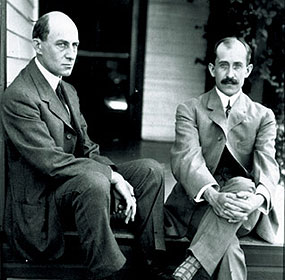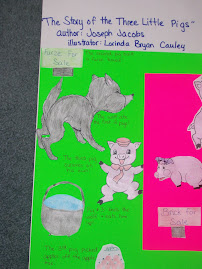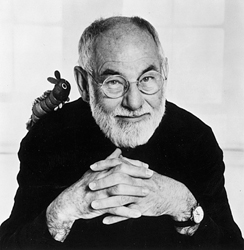I have never read this book nor seen the movie, but I remember seeing previews for the movie and thinking that it would be a movie I would want to see. When I began reading this book, I was a little confused. I wasn't sure why Opal referred to her daddy as "the preacher" instead of "daddy." I loved how the story began though by Opal going to the store for macaroni and cheese, rice, and two tomatoes but she comes back with a dog. I thought Kate DiCamillo did a wonderful job describing Winn Dixie. When she says that he "looks like a big piece of old brown carpet that had been left out in the rain," I can just imagine this brown carpet and imagine how shabby the dog must look. I loved how Winn Dixie became the first friend Opal had made since she moved. A part of the book that really got me is when Opal asks her daddy to tell her ten things about her mom. Later on in the story when they can't find Winn Dixie, I almost cried when Opal thinks about making the list of ten things about Winn Dixie to tell people. Thank goodness Winn Dixie was still at the house and Opal never had to make that list!
Langer has four different stances that he believes readers take while they read a text. "Being out and stepping in" is when readers make their initial contact with a book. In this case, the readers are immediately told of how Opal found Winn Dixie and why she brought Winn Dixie home. "Being in and moving through" is when the reader begins to build a personal envisionment. This stance is when the reader becomes so engrossed in the story that they don't want to put it down. This was the case with me. In this stance we begin to see who Opal really is and how she begins to make new friends as the time passes. "Being in and stepping out" is when readers reflect on how the story plays into their own lives. This is more of the stance that I had while I was reading this book. I imagined what it would have been like to be in Opal's shoes. Her mother had left her, her daddy was a preacher, they had moved, she didn't have any friends. It was almost as if the whole world was against her. But once she meets Winn Dixie, she meets her best friend. Later on Opal makes a friend with the librarian Miss Franny. The "witch" that the boys tell her about isn't really a witch. Opal becomes friends with Gloria Dump, the witch. She even begins coming by and visiting her and reads her "Gone with the Wind." Opal wants to get a job at Gertrude's to pay for Winn Dixie's leash, so she meets Otis. Opal finds out that Otis was in jail but she later figures out it wasn't for anything that bad. I just thought it was amazing how DiCamillo brought this story to her reader in a way that makes them feel like they are there beside Opal making all these new friends. Sweetie Pie was one of my favorites. I loved how she invited Opal to her birthday party even though it was a long way away. Sweetie Pie wanted a friend too and she found one! My favorite friendship that took place in the book was between Opal and Dunlap. Dunlap was one of the boys who gave Opal a hard time and told her that Gloria Dump was a witch. Amanda was also another character in the book that Opal became friends with. Opal wasn't too fond of Amanda at first and then she found out her younger brother had drowned and from that time on she just felt sorr for Amanda. The final stance is "stepping out and objectifying the experience" which is where the readers reflect on the story as a crafted object. Through this book I think that students are able to realize that they can make friends of any age or size or from any background. All that matters is that they have good friends that they can count on.
My favorite part of the book is at the end where all of Opal's friends come together for a party at Gloria Dump's house. I think it is wonderful that DiCamillo ended the story on a happy note with all the friends getting along and singing to Otis's guitar.
I really didn't think of this book being a cultural book until just now. I think that one could incorporate this into their class because it shows how Opal moved somewhere where things were different than what she was used to. It's also a good thing to point out that Opal's friends all come from different backgrounds and they are all different ages.
I would definitely use this book in my class. I feel like it would really help students who come from broken homes or from rough backgrounds to realize that it is going to be okay and that they can have friends that are any age. Like Otis and Miss Franny and Gloria Dump were all much older than Opal. I think sometimes it is better to have some older friends just as long as you hold on to friends that are your own age.
Tuesday, February 12, 2008
Subscribe to:
Post Comments (Atom)
















No comments:
Post a Comment